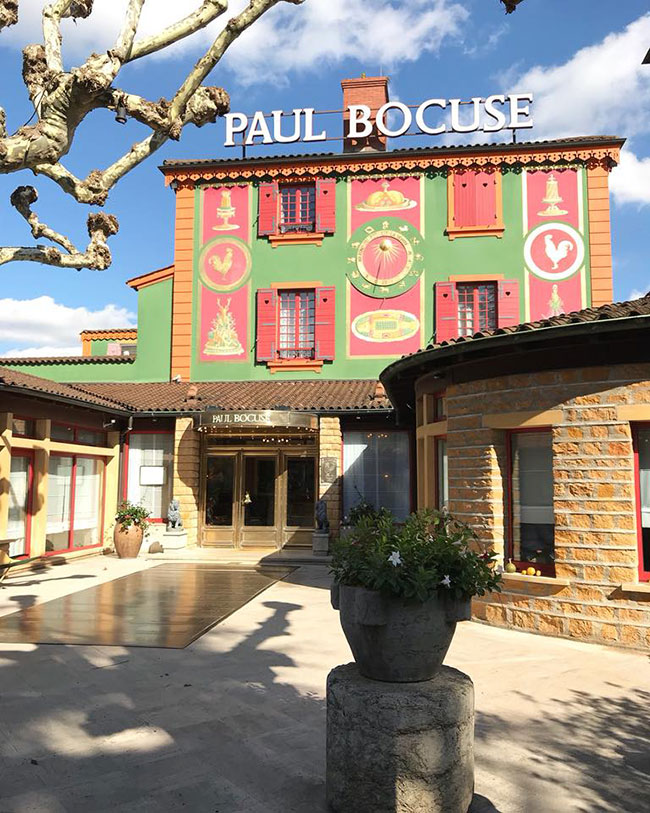Before there was a Thomas Keller, a Grant Achatz or a Michael Mina, the culinary star who’d draw oohs and aahs from fine-dining aficionados was Paul Bocuse, who died this weekend at age 91.
The Culinary Institute of America dubbed him Chef of the Century in 2011. One of the restaurants at the school's main campus in Hyde Park, N.Y., was named after Bocuse.
The Frenchman was known as a pioneer of nouvelle cuisine, a culinary style that broke from the European tradition of using heavy sauces and essentially covering the plate. With nouvelle, chefs used fresher components to showcase the ingredients and let their flavors emerge, instead of dousing everything with some sort of fat emulsion. In the United States, the style was often known as spa cuisine because of its perceived healthfulness.
The modern-day emphasis on seasonal, local ingredients in many ways extends back to what was regarded as revolutionary at the time. Bocuse indicated he was able to change the conventions because he was so steeped in and respectful of French culinary traditions.
"For me and a generation of American chefs who were starting their careers in the 1970s and 80s, Paul Bocuse was the culinary equivalent of Elvis Presley—a source of great inspiration, the object of our adoration, and the model for our emulation," said Tim Ryan, president of the CIA. "Just as musicians around the world, from the Beatles to Bruce Springsteen, aspired to be like Presley, legions of young chefs dreamed of being Bocuse. He was The Big Bang of the culinary world."
The nouvelle movement also sparked the plate artistry and emphasis on presentation that has waxed and waned since. The fresh ingredients of nouvelle were artfully arrayed on the dish, with plenty of white space left to frame the components. The reduced plate coverage gave rise to jokes about a thumb-sized carrot and a pea or two being the whole of a meal.
Bocuse himself referred to the pattern as “mini ingredients on maxi plates.”
His lasting influence on the culinary scene may not be what he changed, but that he succeeded in making a change at all. Before he and his nouvelle cohorts popularized that cooking style, fine dining was largely trend- and fashion-free. Fans and exponents of white-tablecloth dining championed orthodoxy above all else. Was the bechamel authentic? The hollandaise sauce worthy of a cultivated palate? Would Escoffier have approved?

"He’s one of the titans of the induty and he’s gone," said Stephen Zagor, dean of the culinary management curriculum at the Institute of Culinary Education in New York City. "He really started the ball rolling. From where he started, he got us to where we are now. He was the benchmark."
Nouvelle gave way quickly in the United States to American regional cuisine, courtesy of native chefs like Paul Prudhomme, Dean Fearing, Brendan Walsh, Robert Del Grande and Mark Miller, among many others.
It wasn’t as if Bocuse and his influence disappeared from the American scene. In 1982, at the invitation of Disney officials, he teamed up with fellow French superstar chefs Roger Verge and Gaston Lenotre to open Chefs de France, one of two restaurants in the French pavilion of the entertainment company’s Epcot Center. It remains open today, though operated by Bocuse’s son, Jerome. Lenotre died in 2009 and Verge in 2015.
Bocuse continued to reign as a three-star Michelin chef in his native France. He reportedly died from Parkinson’s disease in a room above his main restaurant, L’Auberge du Pont, outside Lyon. It was the same room in which he had been born.
"By the late 1970s, I found myself in Lyon in the great man’s kitchen," recalled the CIA's Ryan. "I learned many things there, but what impressed me most was the kindness and generosity Monsieur Paul bestowed upon me."
Ironically, L’Auberge features a traditional French menu.
Bocuse also operated brasseries under a variety of brand names, each featuring a slightly different form of French cuisine.
He started in the business at age 8. He was classically trained, working in the kitchens of celebrated French chefs.
Bocuse was also famous within the chef community for his indulgent lifestyle. In his memoir, he revealed that he simultaneously conducted 30-year affairs with two women while remaining married. Jerome’s mother is reportedly one of the mistresses.
Members help make our journalism possible. Become a Restaurant Business member today and unlock exclusive benefits, including unlimited access to all of our content. Sign up here.